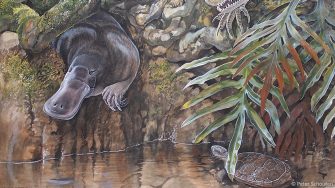UNSW palaeontologists awarded for work revealing Australasia’s unique lab of life
Two UNSW Sydney researchers have been presented with the Royal Zoological Society of New South Wales’ Whitley Medal for co-authoring the new book Prehistoric Australasia: Visions of Evolution and Extinction.

